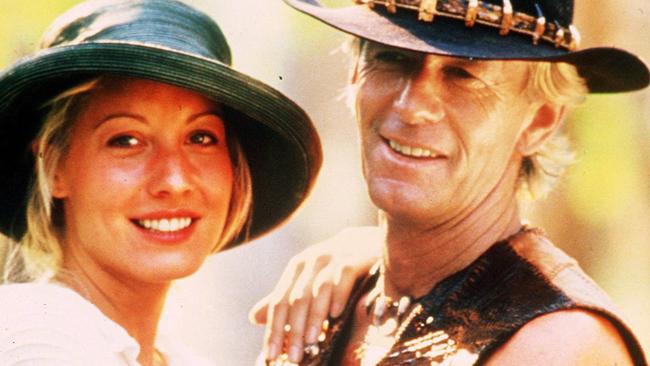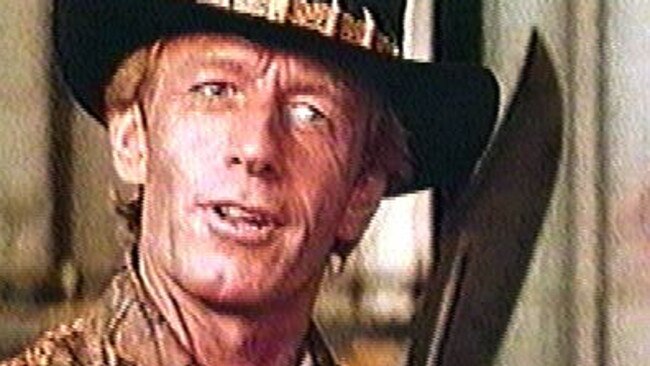How to reconcile Crocodile Dundee with the modern age
FOR years, I put off watching Crocodile Dundee, fearing the inevitable cultural cringe. I finally bit the bullet and did it.
IT’S an Aussie classic, they say. You have to see it, they say.
In my 30-something years, I have resisted watching Crocodile Dundee because I didn’t think I would be able to handle the cultural cringe.
I’d seen clips (yeah, yeah, it’s a big knife, I get it) and that episode of The Simpsons. Did I want to watch a hyper-masculine bloke roaming the streets of New York bewildering jaded city slickers with his untamed Aussie ways? No, thank you. To me that wasn’t what Australia was.
But after days of Crocodile Dundee fever thanks to that mega Tourism Australia campaign, I finally relented. I tracked down a copy (oddly difficult, by the way), sat down and braced myself for one hour and forty minutes of g’days in that stretched-vowel drawl.
And you know what? It really wasn’t that bad. It was even kind of good …?
It may be simplistic, and maybe the romance didn’t really work for me, but it had genuinely funny moments.
Armed with the mantra “this was made in 1986”, I found myself having the occasional giggle more than the occasional eye roll.
It was charming to see Mick Dundee get lost in a NYC crowd, needing to climb a street pole and be “rescued” by a policeman on horseback, or how he persisted with his friendly greetings to strangers in a city too busy to care. It’s a classic fish-out-of-water scenario.
I loved how the people he related to the most in the Big Apple were the multicultural underclass — the black limo driver, the Italian cab driver, the Latina maid — and not the hoity toity white society peeps. It was a nice reminder that Australians often care a lot less about what you have and more about the kind of person you are — a truism, for the most part, that still exists today.
The excess of the ’80s, captured so hilariously in that cocaine steam-off scene, was a nice touch.

Of course, there were definitely moments that make you bristle in a 2018 context. The movie’s sexual politics are regressive compared to today’s standards but was probably the “norm” back then — like when Mick violently grabbed a transperson’s crotch in a club after being told “she” was a “he” and then have someone explain that “it’s OK, he’s Australian”.
The character of Sue also had great potential but ultimately fell short in the writing. I was delightfully surprised when she told Mick to stuff it with his “man’s country” versus “city girl” crap and that she could survive in the bush without him. But after she defiantly walked off she was almost eaten by a croc and had to be rescued by him (perving from the bushes — creepy) at the last moment. What could’ve been an empowering moment ended in disappointment.
Or the fact that she appeared to be this competent and respected journalist who could demand six weeks and a helicopter to chase a croc wrestler for an assignment. Only for it turn out that her father owned the newspaper — nepotism is always a bit of a dampener.
I stopped cringeing every time someone said “sheila”, reminding myself that Humphrey Bogart used to say “dame” a lot on screen. Context is king.

The Australian identity seen in Crocodile Dundee is a specific Anglo conception of the 1980s, one that successfully brought in the tourism dollars with its alluring tales of wild bushmen and beautiful landscapes.
While that’s not who we are now, it is possible to reconcile that image with the multicultural, overwhelmingly city-based people Australians are in 2018.
Mick Dundee was sexist, condescending and probably a poacher. But he was also unpretentious, generous and resourceful.
I like to think that he would have learnt to embrace that side of himself today, leaving behind his crotch-grabbing ways, just like many of his nonfictional peers from back then do now.
Share your movies and TV obsessions with @wenleima on Twitter.



